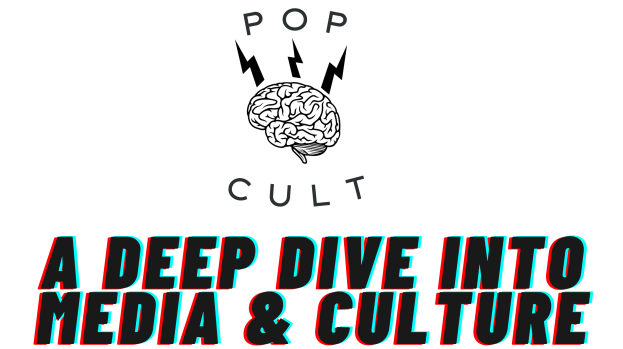Carmilla, The First Vampire (2023)
Written by Amy Chu
Art by Soo Lee
Of all the “classic” monsters, vampires have just never clicked for me. I’ve seen many different takes on vampires from multiple cultures, but I’ve never found them particularly scary. I think part of this is that the vampire has shifted in the culture from being a strange, animal-like predator to either a fetishistic totem of erotic fiction or a metaphor for Other-ed groups we’re meant to empathize with. When that happens, the monstrous fades, and they become just a storytelling trope. I stay open to new takes on vampires, hoping that someone might make them horrific again, and Chu & Lee’s Carmilla graphic novel does a decent job of it.
Athena Lo is a social worker in New York City in 1996. She’s fiercely dedicated to her job, to the chagrin of her girlfriend, who wishes Athena could unplug from work when she’s at home. But the Chinese-American woman can’t get specific clients out of her head; she wants to do everything possible for them. This gets worse when a rash of murders of LGBTQ+ young homeless women looms over the city. All the clues point to Carmilla’s, a mysterious nightclub that all the victims had a connection with. Athena identifies who she sees as the next likely victim, but in her frenzy to save this woman’s life, she loses everything that matters in her own.
The original Carmilla was a serialized novel from 1872 written by Irish author Sheridan Le Fanu and predates Bram Stoker’s Dracula by 25 years. The story is a piece of lesbian horror erotica as it follows a young woman who is preyed upon both for her blood and her sex by a powerful Countess who is revealed to be a vampire. While there are loose connections between the source material and this modern reinterpretation, they are both centered on vampirism’s decaying, corruptive effects. Athena’s life falls into disarray as her mind drifts from her responsibilities to the malaise of an evil she can’t quite describe.
I was curious why 1996 was the chosen period for the story, but I can see how life for LGBTQ+ people was markedly harder then than now, and I think that does add tension to Athena’s story. She is living with her girlfriend in an interracial relationship at a time when it was at least as bad, if not worse than it is today. The correlation between young people being out as queer and homelessness is also a critical element of the story, which is another thing that is sadly still all too real. When Athena brings up her relationship with some people in the story, they react with confusion or revulsion. Also, AIDS was still a cultural monster that caused a lot of mainstream society to ostracize all queer people, despite lesbians having the lowest incidences of the disease. To be queer in the 90s was still a dark time.
There’s some insightful cultural commentary on the presentation of vampires. Athena shares the trope of the jiāngshī (hopping vampire) as she watches Chinese horror films from the 1980s. I think the author wants to underline how the horror of the vampire doesn’t translate across cultures or time. As I said at the top of the interview, the vampire has become a figure for our sympathy now more than fear. Additionally, the reveal of the vampire in this story and what she does & wants goes down a very interesting route. I don’t necessarily think you’ll be surprised in any profound way by how the story wraps up, but it is solidly told.
I found Soo Lee’s artwork to be very good but not always tonally consistent. The colors were a little too bright at times, which detracts from the creepy Gothic mood such a story should have. There are fantastic moments of dread where the writing and the art sync up perfectly, building that brooding sense of evil looming over every part of Athena’s life. But then we have moments in the middle of the day when the weight of a conversation or interaction feels diminished because things are so colorful and bright. When Lee’s art works, though it does convey New York City as a classically Gothic landscape, a place where concrete towers look down on the insects scurrying about.
Carmilla is a very well-paced and thoughtful vampire store, which I liked more than I expected I would. I wouldn’t say it has rekindled vampires as a powerful horror trope for me, but I liked how well Athena’s character was developed. The conflicts she is put in bring out her personal values but also reminded me of something like Jacob’s Ladder, where right from the start, you know this story is going to spiral down into Hell, and its main character is likely not going to end up in a great situation. If you’re looking for a good piece of Asian-American comics fare or horror literature, there’s a lot of great stuff to be found in this book.


One thought on “Comic Book Review – Carmilla, The First Vampire”